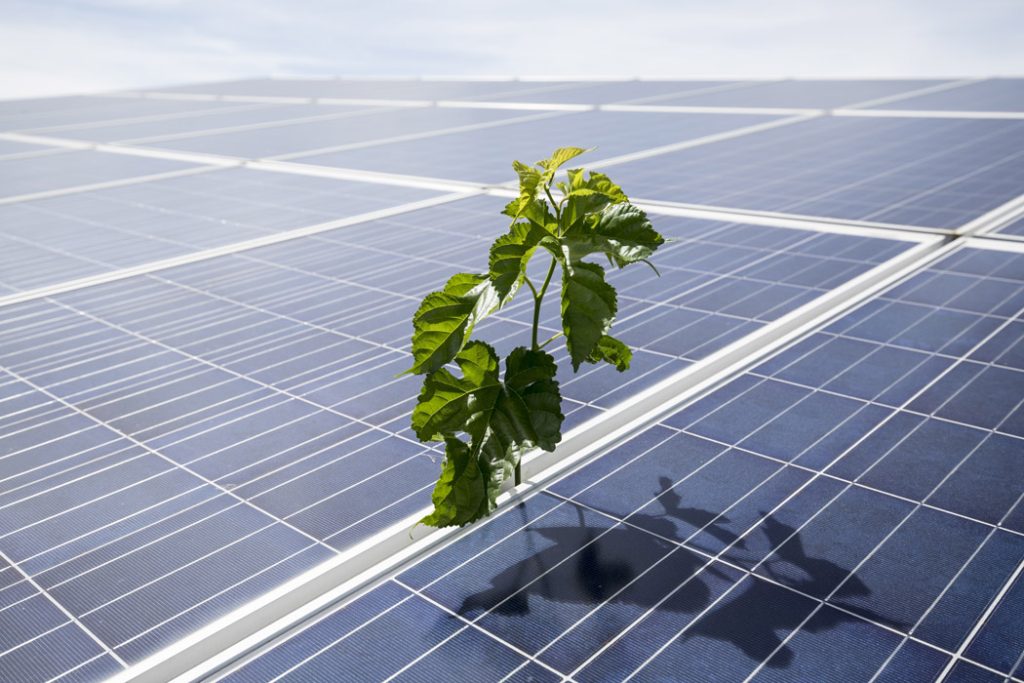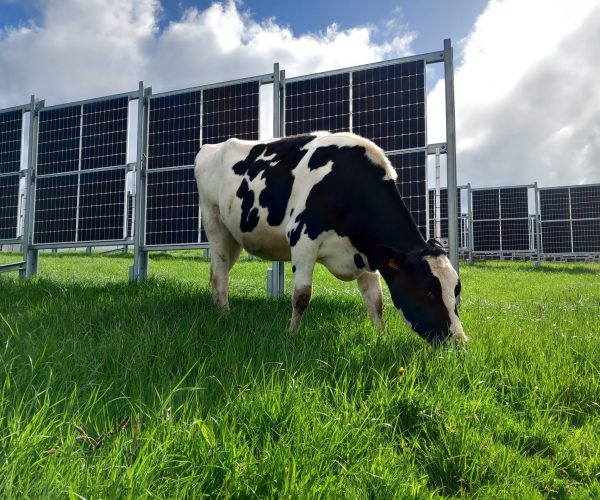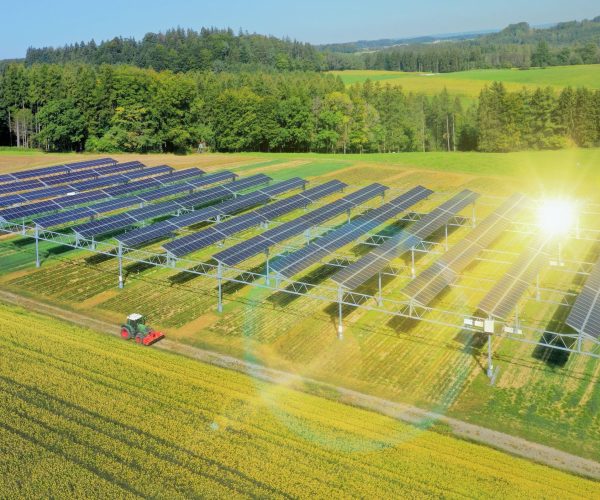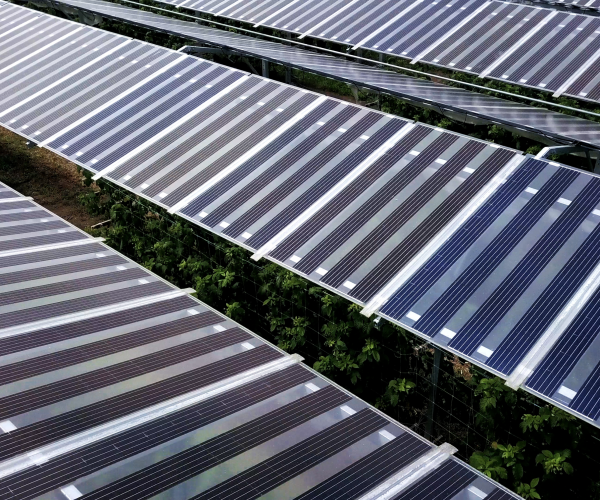Croatia takes a leap for Agrisolar
The Agrisolar landscape in Croatia is undergoing important changes. SolarPower Europe spoke with Maja Pokrovac, Director of RES Croatia, about the recent Agrisolar developments in the country. Read the interview below.

Croatia’s new Spatial Planning Act was passed in June 2023, recognising the term agrisolar for the first time, and defines areas for its application
By utilising agrisolar farms on just 1% of the total available agricultural land in Croatia, which amounts to approximately 1,000 hectares, we can contribute to the protection of agricultural production and the overall annual electricity production of more than 1,000 GWh. This is three times the current installed capacity of solar power plants in Croatia. Furthermore, the implementation of floating solar power plants in existing freshwater aquaculture allows us to achieve significant potential and annual production of over 16,000 tons of fish production, which is four times more compared to the production in Croatia in recent decades.
1. What are the primary benefits of Agri-PV and how can these benefits be applied in the context of Croatia?
According to the European Environment Agency (EEA) report, Croatia is one of the three European countries that suffer the highest cumulative share of damages from extreme weather and climate conditions, which decreases the gross national product (GNP). The loss from climate extremes in Croatia increased 16 times in just 4 years (2018.-2022.), i.e. from €25 million in 2018 to €411 million in 2022. Between 2013 and 2019, droughts, floods and hailstorms caused damages to agriculture worth a total of €1.2 billion. Dry periods and rising temperatures are serious challenges for Croatian farmers and agriculture. Since Croatia is a mainly rural country, there is a huge interest from smaller farmers in agrisolar in order to be competitive with farmers who possess large plantations.

Photo © Akuo
2. What does the Agri-PV landscape in Croatia currently look like?
Agrisolar has become a hot topic in Croatia in the last year, although RES Croatia’s first communication some seven years ago stressed the importance of combining domestic renewable energy and agriculture. Since there was a lot of misconception and false information regarding its development, RES Croatia decided two years ago to conduct a comprehensive “Study on the potential of solar energy use in the agricultural and freshwater aquaculture sectors in Croatia” in partnership with Faculty of Agronomy in Zagreb, Faculty of Agrobiotechnical Sciences in Osijek and Institute for Adriatic Crops and Karst Reclamation in Split, choosing faculties from the different regions in Croatia to best define on which cultures solar panels serve the best. The study and action plan were published in September 2023, and like the previous three studies they were funded by the European Bank for Reconstruction and Development (EBRD).
The study consists of 136 pages and covers all aspects of agrisolar development, including research and best practice examples in other countries in order to compare Croatian potentials with potentials in other countries. It has also identified viticulture, fruit growing, cultivation of aromatic and medicinal herbs, grassland farming and fish farming as the most suitable agricultural sectors for the application of agrisolar systems in Croatia. On the other hand, for vegetable production, cereal production, industrial and fodder crops, it was concluded that these crops are not yet considered suitable for agrisolar projects. In Croatia, we will first focus on the projects with fruit growing and viticulture as they suffer high climate changes and high profitability loss.

Photo © BayWa r.e.
When it comes to the development of agrisolar or aquasolar projects, we already have several projects that are waiting for approval from the Ministry of Economy and Sustainable Development as well as the significant interest of both developers and farmers to make such partnerships. Most of them are medium and large-scale agrisolar power plants, either on-grid or hybrid. Since the positive change in legislation was done just before summer 2023, their development is in the early stage. The projects are oriented toward perennial plantations, primarily for orchards and vineyards, totalling some 1 GW. In addition to perennial plantations, there is also interest in floating aquasolar projects on freshwater fishponds. The first of such projects currently being prepared is a 400 MWp project development ongoing on a fish pound of 1.360 ha water surface.
RES Croatia has reacted recently towards the Ministry of Economy and Sustainable Development when a developer called a project agrisolar since it was not even close to that as it can mislead the agrisolar development in Croatia. This is why publishing articles, organising webinars and providing reliable information on the development of agrisolar and aquasolar is our continuous work.
3. What needs to happen for Agri-PV to realise its full potential in Croatia?
Although we have defined in Croatia the development of agrisolar in legislation by simplifying its procedure, we need bylaws that will define operational levels: how and where this synergy of agriculture and renewable energy can happen and how to control it.
For example, we need to define which instruments will be used to ensure monitoring mechanisms: that the food or fish production is taking place under agrisolar or aquasolar, that the production is secured on a certain level and that the benefit of solar on agriculture land is given in order to prevent its misuse.

Photo © Fraunhofer ISE
4. Can you tell us more about the recent regulation passed in Croatia for Agri-PV? How will this benefit both the solar and agriculture sectors?
In 2022, the Ministry of Agriculture initiated the amendments to the Agricultural Land Act allowing the installation of “green energy infrastructure” for the purpose of “increasing the profitability of agricultural production”. While this amendment allowed the application of agrisolar on state-owned agricultural land, it prevented private land owners to develop agrisolar projects.
The biggest impact on agrisolar development happened this year. In June 2023, Croatia passed a new Spatial Planning Act, which recognises the term agrisolar for the first time, and defines the areas of its application, mainly on permanent plantations registered in the agricultural land use registry. In addition, the Law enables the use of inland water surfaces (lakes, ponds, aquaculture) for solar development.
Following the enactment of the Spatial Planning Act, progress has been made by the Ministry of Economy and Sustainable Development in establishing the legal framework for agrisolar in energy-related laws. It allows agrisolar projects on both private and state-owned land, eliminating the need for a public tender for an energy approval on a state-owned land which helps agrisolar to develop much faster, shortening the process to 6 months.
By allowing the installation of agrisolar and aquasolar, Croatia has joined the best and become one of the 10 EU countries that have recognised the value and importance of the technology.
5. What needs to happen at the EU level for Agri-PV to shine?
Agrisolar can provide much-needed help and support to European agriculture but to ensure sustainable growth of this segment, EU Member States should develop comprehensive and coherent agrisolar policy frameworks. A coherent and unified European policy on agrisolar and aquasolar is needed. For example, the EU should define mechanisms for the development and installation of agrisolar with precise definitions for where, how, and under which conditions agrisolar can be built.
We can see that every Member State has its own mechanisms for dual use of agricultural land and therefore, we think that it is necessary to create a consensus at the EU level to have same conditions for installing agrisolar and same mechanisms of support. We need to define ways of measuring the benefits of agrisolar for agricultural production as well as linking incentives for agrisolar based on its sustainable impact and prevention of climate damage on agricultural land.

Photo © BayWa r.e.
SolarPower Europe’s Agrisolar Best Practice Guidelines have been adapted to the Croatian market and translated to Croatian by RES Croatia.
Do you want to find out more
about this topic?
these might be interesting to you as well




